Sauropods were big survivors
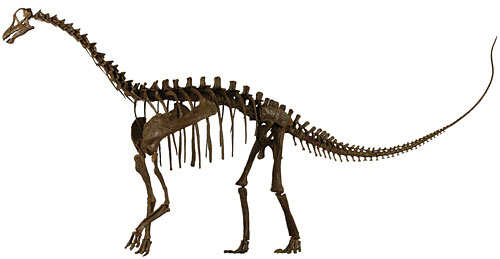
A Zurich researcher has been helping to unlock the secrets of how sauropod dinosaurs - the largest ever creatures to have walked the earth – attained their size.
Scientists think that the fact that these herbivores had many offspring, did not chew their food, had bird-like lungs and a flexible metabolic rate helped them dominate the earth for 100 million years.
The results of a study by a multidisciplinary team which includes Marcus Clauss, a veterinarian from Zurich University, are published in the latest edition of the prestigious Science magazine.
Sauropods, such as the diplodocus, are characterised by their long necks and tails. Based on fossil finds, scientists know that they could reach a body length of 40 metres and heights of almost 20 metres – the equivalent of a three-storey building.
“Other dinosaurs were more or less within the body mass range of mammals, but sauropods exceeded this extremely,” Clauss told swissinfo.
“It is said they could get to 70 or even 100 tonnes in body mass whereas as the largest ever land mammal, the rhinoceros-related Indricotherium, now extinct, reached around 15 tonnes,” he said.
Clauss, who works at the animal hospital at Zurich University, is an expert in the digestive physiology of large animals, such as elephants and rhinoceroses.
By allying this “modern” knowledge with the “ancient” know-how of Bonn palaeontologist Martin Sander – and the skills of a team of German dinosaur experts, biologists and ecologists – some explanations were reached as to sauropods’ size.
Eggs and offspring
All dinosaurs laid eggs, whereas modern mammals produce a very few young over a long period – for an elephant it is roughly one calf per four years. Elephants therefore find it hard to repopulate if a herd is decimated by drought or flooding.
But dinosaurs could lay lots of eggs and repopulate quickly. “This is probably one of the reason for their long-term stability within these 100 million years,” said Clauss.
Another difference from mammals is that sauropods did not chew their food. Chewing has the advantage of making digestion easier, but limits food intake because it is time consuming.
Sauropods could therefore eat a lot more than their chewing counterparts.
They had small heads because they had no chewing teeth or cheek muscles, which allowed for the development of a very long neck – longer than any giraffe of today. Food was swallowed whole and digested in their huge intestines.
Clauss says there is no equivalent for this among modern vertebrates except for giant tortoises, which are much smaller at 200 kgs.
Like a bird
Another important anatomical aspect was that the sauropods had bird-like lungs. Mammals inhale and exhale, with the lung expanding, exchanging and moving the air it needs.
Bird lungs are inflexible but have air sacks that pump air through the lungs during inhalation and exhalation, ensuring a constant flow of fresh air. These sacks extend into the bone structure, especially into the neck vertebrae. The bones have small holes and are “pneumatised”, making them lighter. The bones of sauropods also reveal these characteristics.
“This is an advantage for a very large animals because you don’t have to carry around a solid neck, another anatomical feature which enabled these very large forms,” Clauss said.
These large air sacks also meant that sauropods could get rid of a lot of internal heat when they exhaled. Many large mammals find it difficult to expel the internal heat they produce. This is why, Clauss says, elephants have developed large ears – to increase heat-dissipating surface.
Fast growers
Sauropods were also fast growers, reaching their adult size in around 20 to 30 years, suggesting a speedy metabolic rate. But this would mean overheating in adult body sizes.
A slow metabolism like a tortoise would pose no problems of overheating, but would make these fast growth rates difficult to explain.
The researchers came up with an intriguing theory: that young sauropods had a fast metabolic rate while growing but that this slowed during adulthood. “This is something that doesn’t happen in the present animal kingdom,” said Clauss.
These different factors combined to make sauropods unique and ensured their long existence, scientists believe. No present mammal group can show a comparable geological survival record.
“People often think that dinosaurs were failures because they became extinct at some stage,” Clauss said.
“But we still have a long time to go to prove that we can live as long in terms of geological time.”
swissinfo, Isobel Leybold-Johnson in Zurich
Sauropods include the diplodocus and brachiosaurus. There were about 120 types in all.
It was first thought that sauropods lived in water because they were so large. There was also confusion about how they stood. A brachiosaurus in a Berlin museum had to be reassembled because it was originally shown to have bent back legs like a lizard. This was not possible because of the weight. A sauropod had to stand on four columnar legs like elephants.
Sauropods were present all over the earth. Only in Northern America did they become extinct at some stage prior to the big dinosaur extinction event. It is still not known why dinosaurs in general became extinct.
The dinosaur ecosystem had far more carnivores than today’s mammal ecosystem. Clauss and the team believe that large sauropods were not preyed on because of their size, so meat-eating dinosaurs must have eaten sauropod young – which were numerous. Not many survived into adulthood.
This was carried out by researchers in Zurich and Bonn under the auspices of the German Science Foundation. An article will be published in Friday’s edition of Science.
Apart from treating animals in Zurich Zoo and the Langenberg Wildlife Park, the animal hospital at Zurich University is also used for research.
Clauss says that knowing how dinosaurs lived gives insights into how modern ecosystems work.
A good Swiss dinosaur museum, which includes sauropod skeletons, can be found at Aathal, not far from Zurich.

In compliance with the JTI standards
More: SWI swissinfo.ch certified by the Journalism Trust Initiative










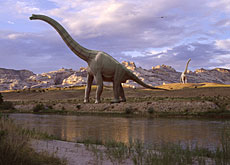
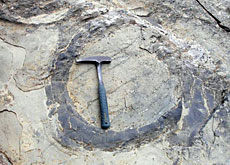
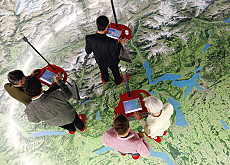
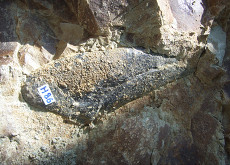


You can find an overview of ongoing debates with our journalists here . Please join us!
If you want to start a conversation about a topic raised in this article or want to report factual errors, email us at english@swissinfo.ch.